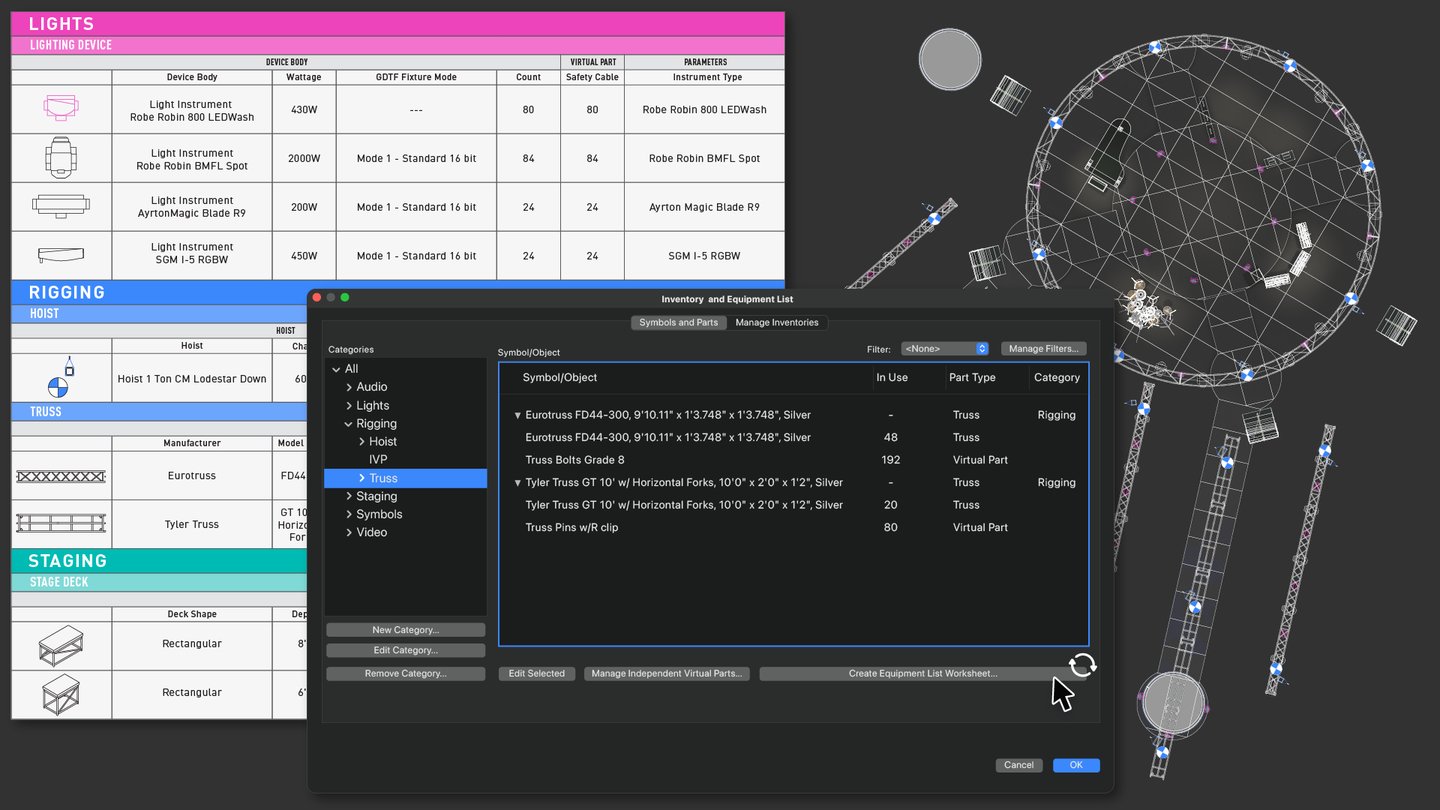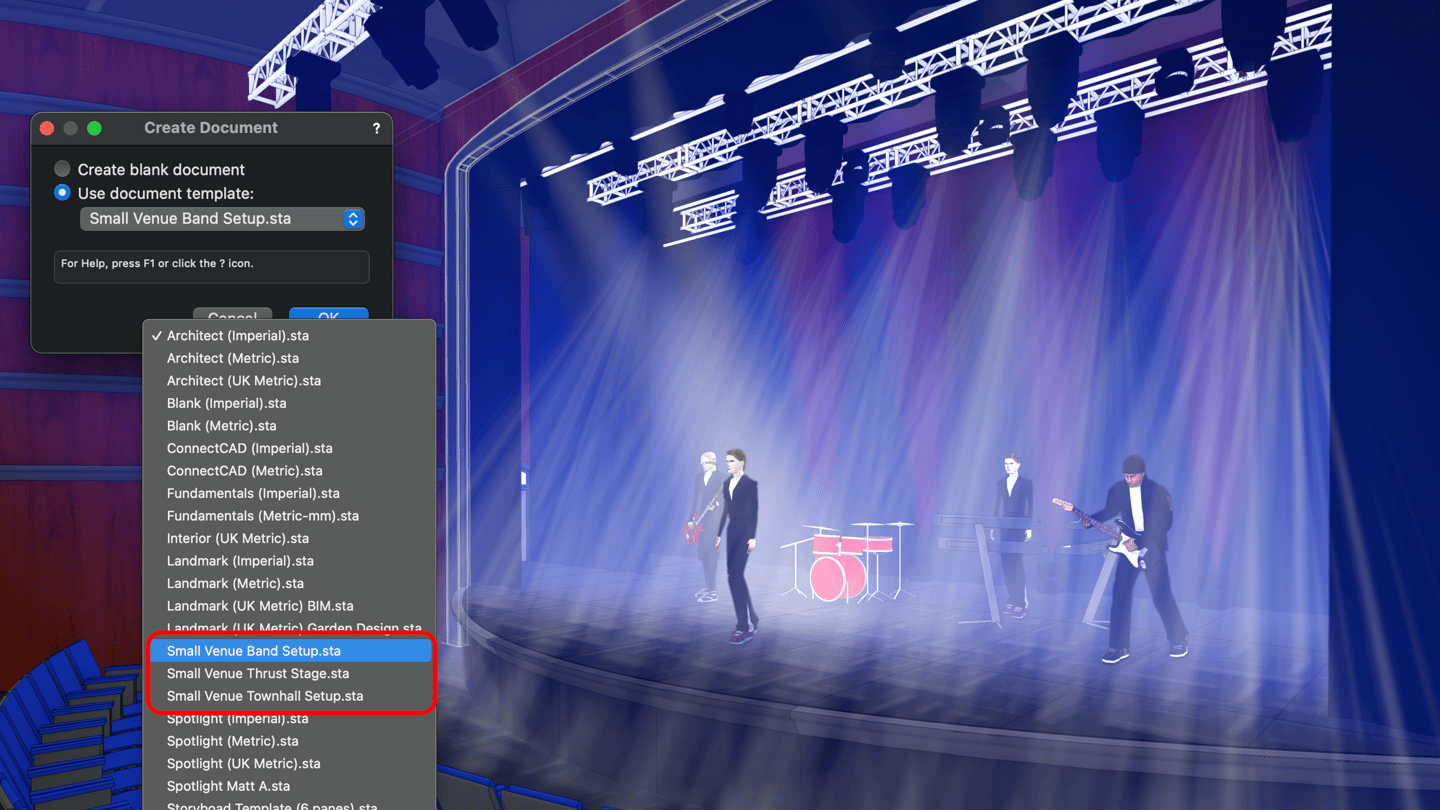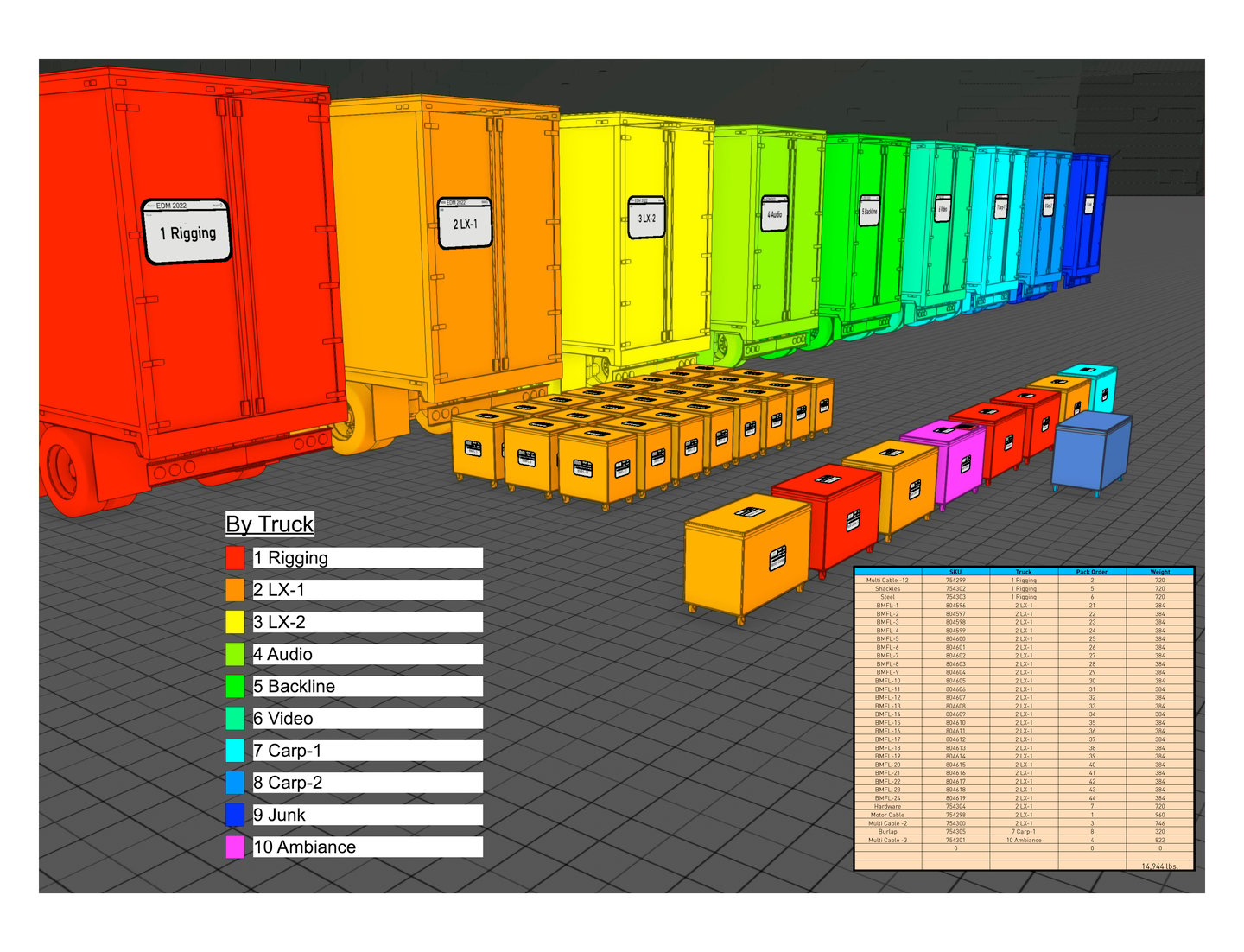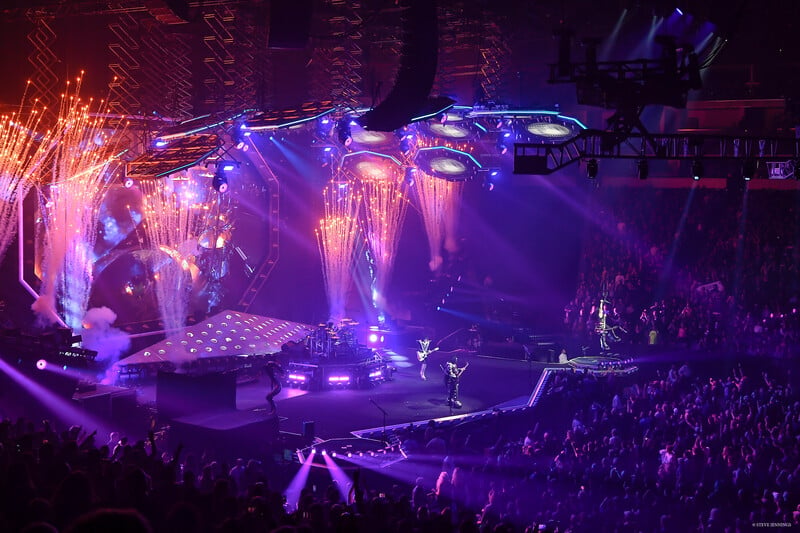*KISS “End of the Road” Tour | Courtesy of SRae Productions and Todd Moffses.
Tour management has come a long way, according to industry veteran Steve Lemon.
When Lemon began his career, the idea of combining design, management, and technology was akin to science fiction. Now, it’s commonplace.
Continue reading to see how Vectorworks Spotlight can help with the heavy lifting of tour management.
Managing a Cost, Schedule, & Space on Tour
Lemon, who's worked on tours for the likes of Aerosmith, Bon Jovi, Jay-Z, Prince, and U2 , first used Vectorworks Spotlight while working on the Woodstock 1994 festival. Lots of his collaborators were using design software, and it was the first time Lemon realized that such technology would help him better present his work and professionalism.
"I saw the presentations these other companies were coming in with, and I knew I had to up my game," he said. Since then, it's become a vital part of his work, something he "can't live without."
Another vital part of Lemon's career? A strong belief is that it's the job of any tour or production manager to reduce friction.
Such "friction" can be caused by anything that gets in the way of a good show. But for Lemon, the focus should be on three primary areas: cost, schedule, and space.
In the following sections, we'll briefly examine each of these three areas for potential friction. You'll also find a few Vectorworks Spotlight features that can help you with your own tour management efforts.
Cost
The monetary budget is, of course, the most pressing concern. As a tour manager, it becomes your job to make sure the tour stays within budget.
Proper care and tracking of your tour's equipment, for example, can help eliminate the mistakes of gear and materials being left behind at a previous venue. Equipment lists in Vectorworks create a unified tracking process for equipment used directly in your Vectorworks model. Regardless of how many different objects you have within your file, you'll be able to automate your tracking process and avoid the tedious, error-prone process of managing your inventory by hand or with an additional application.
The equipment you track can consist of practically everything entertainment-related, from motors and trusses to lights and cables. The subparts of an object are also included, such as virtual parts specific to an element, like a safety for a lighting fixture, and independent virtual parts, like gaffer tape or zip ties.
Equipment Lists will also aid in your ability to create detailed reports of necessary equipment that can be easily distributed to clients and vendors.

If you want to know more about the Vectorworks 2024 feature, click the button below:
Schedule
Next, there's the management of time and resources. This includes travel logistics, managing your crew's work hours, equipment timetables, and ensuring that set-up and tear-down are handled efficiently. Adding data to your drawing objects in Vectorworks Spotlight using Record Formats and the Create Report command is a great way to circumnavigate these scheduling challenges.
Creating a Record Format for, say, all of your AV equipment can help your crew know the serial numbers of every device, where it should be located, and even cost — saving them from the tedious processes of trying to sort all of this out at each venue once the materials have left the shop.
To create a new Record Format, start in your Resource Manager, and then select New Resource. From there, select Record Format from the tool bar, and click New Record Format.
The Create Record Format dialog should then open for you.
Next, enter the name of your custom record. Name this whatever you like, but we recommend following some sort of naming convention.
After you name the record, all you need to do is select New to define any parameters (such as type or database connection information) you may want for your record.

The Create Report feature empowers you to effortlessly choose a cluster of objects from a drawing, such as multiple speakers, and subsequently generate a practical worksheet based on the data associated with those objects, whether it pertains to their classification or whoever's responsibility they are. This swift and efficient process of creating personalized reports proves invaluable when it comes to effectively communicating project details to your crew and/or venue staff.
Space
Lastly, managers have to account for space — from making sure a stage fits properly into a venue, to estimating sellable seats, and even figuring out where and how trucks are going to be loaded.
Creating your show as a template file, for starters, can help you tweak your production for each new venue without tampering with your original file or needing to redraw your show completely.
To save a file as a template, select File > Save as Template. Templates will then be placed in your User Folder by default under [User]\Libraries\Defaults\Templates.
Click here to learn more about creating template files.

When it comes to loading your trucks, data visualization can be a useful tool. It lets you create an illustration that conveys object data without having to redraw or reset any of your object attributes. Then, you and your crew can quickly see and communicate information about your packs as it applies graphic attributes to objects based on criteria such as weight, spec number, or even truck packing order.
This graphic representation of your truck's contents can even assist you in determining the number of trucks you'll need.

If friction is reduced, your tour's cost, schedule, and space planning can work together like a symphony. For example, if you properly lay out how you're going to load/unload your trucks, where they're going to be located, where the material will land inside the venue, and who's going to be doing the work, you can cut down on your set-up and tear-down times and better manage your team’s work hours. This, in turn, could give your artist/event a chance to add more dates to the tour, leading to a greater profit.
“There was a time when a band would have to take in-person meetings with designers, look at a physical model, give input, send the designer up to a hotel room to turn the revisions around and come back with the next model that night. Today, we’re more effective and efficient, we do real-time edits in 3D over the internet. It’s faster, less travel, fewer resources, and less friction. The whole thing can be summed up as the marriage of art and commerce. It’s a fun business,” Lemon said with a smile on his face.
Vectorworks Spotlight & Tour Management Go Hand-In-Hand
For more on how Vectorworks Spotlight can help you reduce friction on your next job, check out the following:
IMPROVE YOUR COLLABORATION & PROJECT MANAGEMENT IN VECTORWORKS SPOTLIGHT
BEYOND DESIGN — MANAGE SHOWS AND EVENTS WITH VECTORWORKS SPOTLIGHT

.svg)





